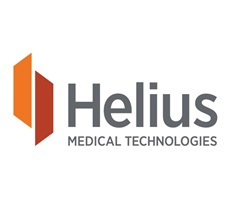 Helius Medical Technologies has announced the filing of its US Food and Drug Administration (FDA) 510(k) submission for the Portable Neuromodulation Stimulator (PoNS) device’s label expansion seeking an indication for gait and balance deficit in patients with chronic stroke symptoms.
Helius Medical Technologies has announced the filing of its US Food and Drug Administration (FDA) 510(k) submission for the Portable Neuromodulation Stimulator (PoNS) device’s label expansion seeking an indication for gait and balance deficit in patients with chronic stroke symptoms.
The submission was made with data generated in the company’s stroke registrational programme (SRP) and was filed under its current US FDA Breakthrough Device designation.
All statistical analyses for the functional gait assessment (FGA) primary endpoint demonstrated PoNS’ superior effectiveness in improving gait deficit by achieving a clinically meaningful mean improvement of more than five points, which was statistically significant across all studies (p<0.05) and was maintained for at least 12 weeks after completion of the therapy. Conversely, the control group—across all trials—achieved a mean FGA improvement of less than four points, which fell below the 4.2-point minimal detectable change (MDC) that reflects clinical meaningfulness of the therapeutic intervention.
“Substantial evidence across the SRP trials supports the superiority of active PoNS therapy as compared to physical therapy [PT] alone, when applied in standard clinical settings for stroke rehabilitation,” said Antonella Favit-Van Pelt, Helius’ chief medical officer. “The totality of data in stroke survivors with gait deficits confirms the broader evidence of PoNS’ therapeutic effect in improving walking disability by enhancing and potentiating the benefit of physical therapy. Consistent with the existing body of clinical evidence, PoNS also confirms to be a safe and well-tolerated therapy.”
The efficacy and safety of PoNS were clinically established from three clinical trials across 10 sites and 159 enrolled chronic stroke survivors with gait deficit due to stroke, Helius claims. The studies were structured to assess the effectiveness and safety of the PoNS device in conjunction with routine physical rehabilitation therapy over a 12-week treatment period. Participants were also followed for 12 weeks after completion of treatment to assess durability of treatment effect.
Primary efficacy endpoints for gait (FGA) and balance (Berg balance score [BBS]) as well as key secondary endpoints, including risk of falling (FGA <23) and durability of effect (<30% reduction of FGA improvement 12 weeks after completion of study treatment), were analysed across the two pivotal studies, using a propensity score design methodology adjusted for multiplicity control. Study success was achieved by demonstrating superiority—using the Hochberg method—for either primary endpoint, which then allowed for analysis of the key secondary endpoints via the same methodology.
Overall, the primary endpoint was met and proved to be statistically significant for the FGA primary endpoint. In the primary analysis of the pooled pivotal randomised controlled and single-arm studies, treatment with active PoNS plus PT led to an adjusted mean change in FGA of 5.37 points (95% confidence interval [CI], 4.23–6.52) at week 12 as compared to a change of 3.31 points (95% CI, 1.96–4.76) in the control group involving sham PoNS plus PT. The treatment group difference by propensity adjustment was 2.06 (95% CI, 0.29–3.84) with a two-sided p-value of 0.0233 that met the Hochberg requirement for multiplicity (<0.025) and, therefore, demonstrated statistical superiority—as stated in a Helius press release.
Durability of the active PoNS therapeutic effect achieved at week 12 was also demonstrated, with a mean percentage reduction in FGA ranging between -4.71% and -4.97%, and with 89.7% (95% CI, 81.8–97.5%) of subjects meeting the durability performance goal. Improvement from baseline to week 12 was demonstrated for BBS in the active PoNS group too, although it did not reach statistically significant between-group separation. Similarly, risk of falling was resolved in 17.4% of subjects in the active PoNS group as compared to 8.9% in the control subjects, albeit not to a statistically significant extent. Treatment with PoNS was confirmed to be safe and well-tolerated with no incidence of treatment-related serious adverse events (SAEs) across the SRP trials and existing real-world evidence (RWE) data, as well as rates of adverse events that were unrelated to the PoNS device ranging between 0% and 14.8%.
“Submitting our 510(k) application to the US FDA brings the benefits on gait from PoNS therapy one step closer to stroke patients,” said Dane Andreeff, chief executive officer (CEO) of Helius. “I’m incredibly proud of our team and thankful to the clinicians who facilitated this trial as we work together to increase patient access to this powerful therapy. We’re optimistic about a positive US FDA outcome and the opportunity to support those living with the effects of stroke.”










